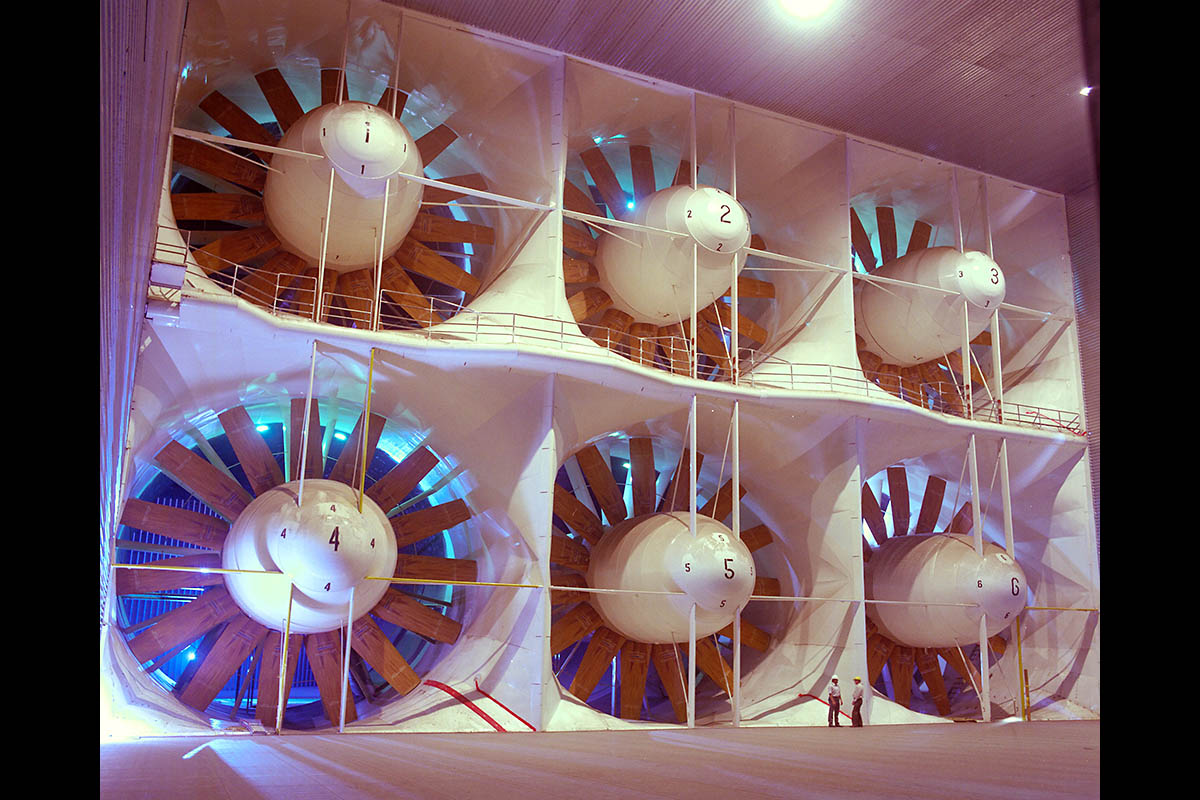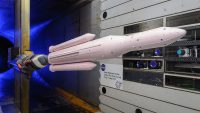This system of fans moves air through the world’s largest wind tunnels, at the National Full-Scale Aerodynamics Complex at NASA’s Ames Research Center in California’s Silicon Valley. Each of the six fans is 40 feet in diameter and is driven by a 22,500-horsepower electric motor. Two figures near fan 5 give a sense of scale. (NASA/Ames Research Center/Tom Trower)
Home This system of fans moves air through the world’s largest wind tunnels, at the National Full-Scale Aerodynamics Complex at NASA’s Ames Research Center in California’s Silicon Valley. Each of the six fans is 40 feet in diameter and is driven by a 22,500-horsepower electric motor. Two figures near fan 5 give a sense of scale. (NASA/Ames Research Center/Tom Trower) This system of fans moves air through the world’s largest wind tunnels, at the National Full-Scale Aerodynamics Complex at NASA’s Ames Research Center in California’s Silicon Valley. Each of the six fans is 40 feet in diameter and is driven by a 22,500-horsepower electric motor. Two figures near fan 5 give a sense of scale. (NASA/Ames Research Center/Tom Trower)
This system of fans moves air through the world’s largest wind tunnels, at the National Full-Scale Aerodynamics Complex at NASA’s Ames Research Center in California’s Silicon Valley. Each of the six fans is 40 feet in diameter and is driven by a 22,500-horsepower electric motor. Two figures near fan 5 give a sense of scale. (NASA/Ames Research Center/Tom Trower)



